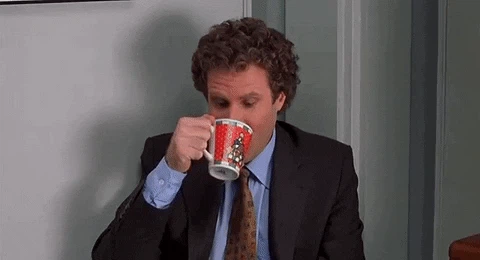Are You Drinking Moldy Coffee? Here's What To Do If You Are
Most of us start the day by drinking coffee, but have you ever thought about what’s in your coffee besides cream and sugar?

We all know that it’s important to be conscious about what we put into our bodies. Avoiding sugary drinks and processed foods as much as possible is a good start to a clean eating routine, but what about coffee? As gross as it may sound, there’s actually a chance that your coffee has mold in it.
How in the World Could My Coffee Be Moldy?
Mold? In my coffee? Ew! And no, we’re not talking about the beneficial blue cheese-type mold. We’re talking about mycotoxins.
According to Healthline, mycotoxins are “toxins formed by molds — tiny fungi that may grow on crops like grains and coffee beans if they’re improperly stored. These toxins can cause poisoning if you ingest too much of them.” Mycotoxins also cause indoor mold problems, which can cause allergy-related symptoms like sneezing, itching, and wheezing. Though there are many different types of mycotoxins, the ones that are found in coffee are carcinogens that can possibly cause kidney problems.

So how do mycotoxins get into coffee? The answer is a little complicated because it’s possible for mycotoxins to get into coffee throughout several steps in the process. Since coffee beans are largely grown in tropical climates, there’s a higher risk for mold growth than if they were grown in a cool or dry climate. Luckily, beans are washed before they are processed and shipped, but there’s also a chance that mold will grow in the shipping and roasting processes if they’re not dried properly.
The good news is that the levels of mycotoxins that are found in coffee (if they make it into coffee) are low enough that they don’t pose a major threat, but it’s understandable if you want to avoid it altogether.
No Mycotoxins in My Coffee, Thanks
Does this mean you have to give up coffee forever if you’re sensitive to mold and/or you want to avoid mold exposure? Not necessarily. There are a few ways to reduce your risk of drinking moldy coffee. Some strategies are as simple as buying coffee beans grown at high altitudes where the climate is cooler and drier, buying wet-processed coffee beans to avoid the risk of developing mold in the drying process, and buying coffee beans grown on farms that process them by hand.

Many organic coffee brands use these strategies to make sure their coffee is safe to drink. Though buying coffee that’s certified organic is a safe bet (you’re also more likely to be safe with coffees that are Rainforest Alliance Certified), you can take the extra step by buying coffee that’s certified by an independent lab as mold-free. Some of these certified and clean brands include Bulletproof, Peak Performance Organic Coffee, Isagenix Coffee, Kicking Horse Coffee, Natural Force Coffee, Purity Coffee, and Spirit Animal Coffee.
Closing Thoughts
Though there’s a good chance that your current batch of coffee doesn’t have any mold in it, those with mold sensitivities or who want to take extra precautions should take the time to look into coffee from organic and mold-free brands. Though it will be a little more expensive than your average cup, it’s worth it for your health.
Don’t miss anything! Sign up for our weekly newsletter and get curated content weekly!